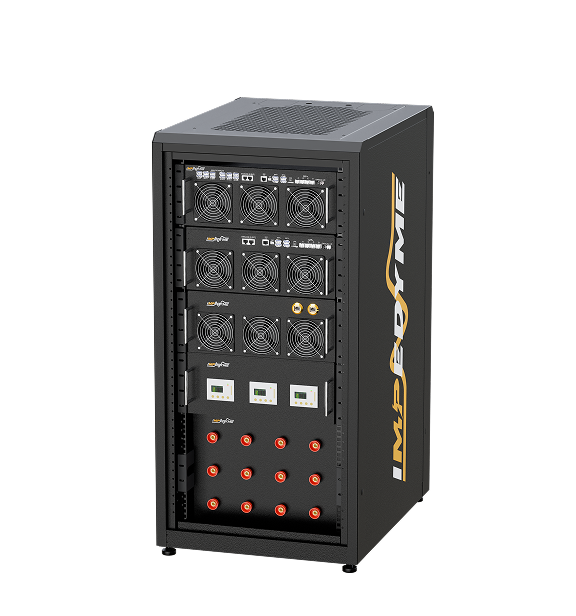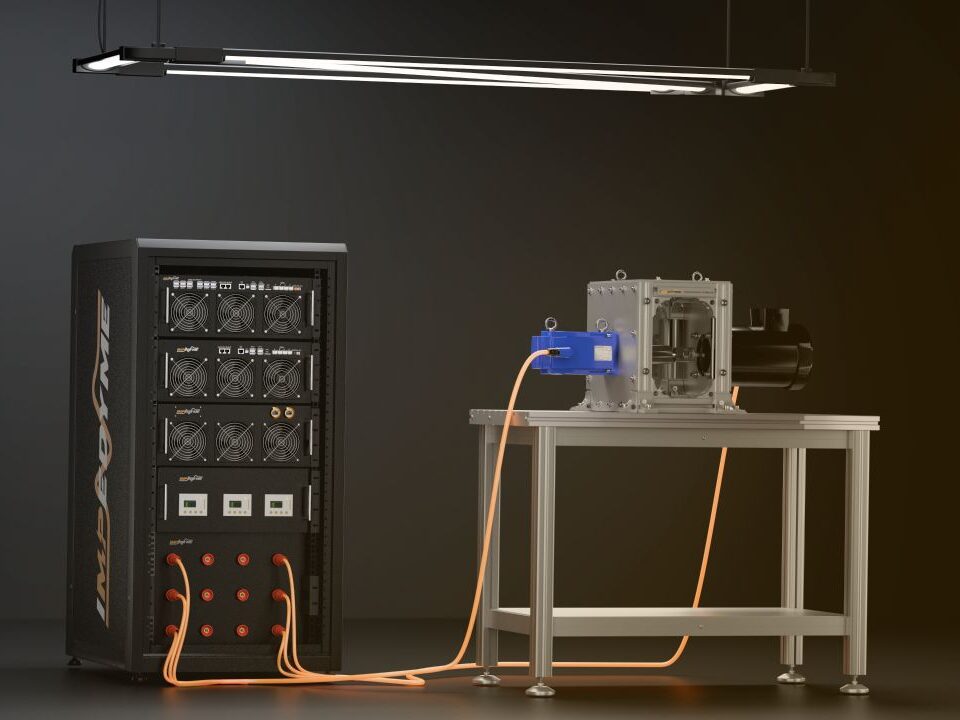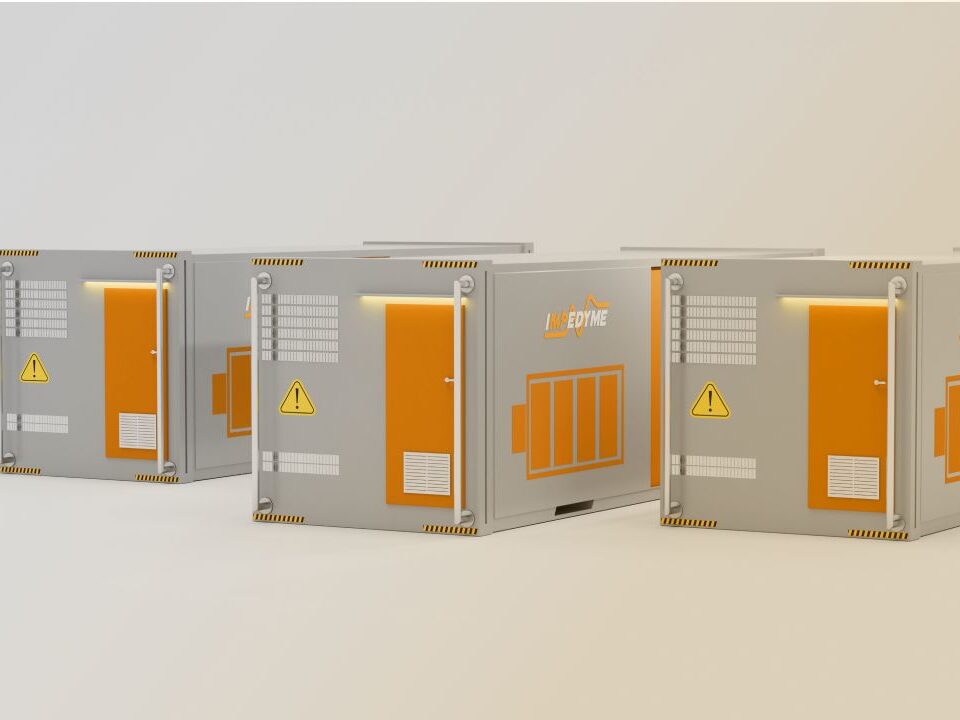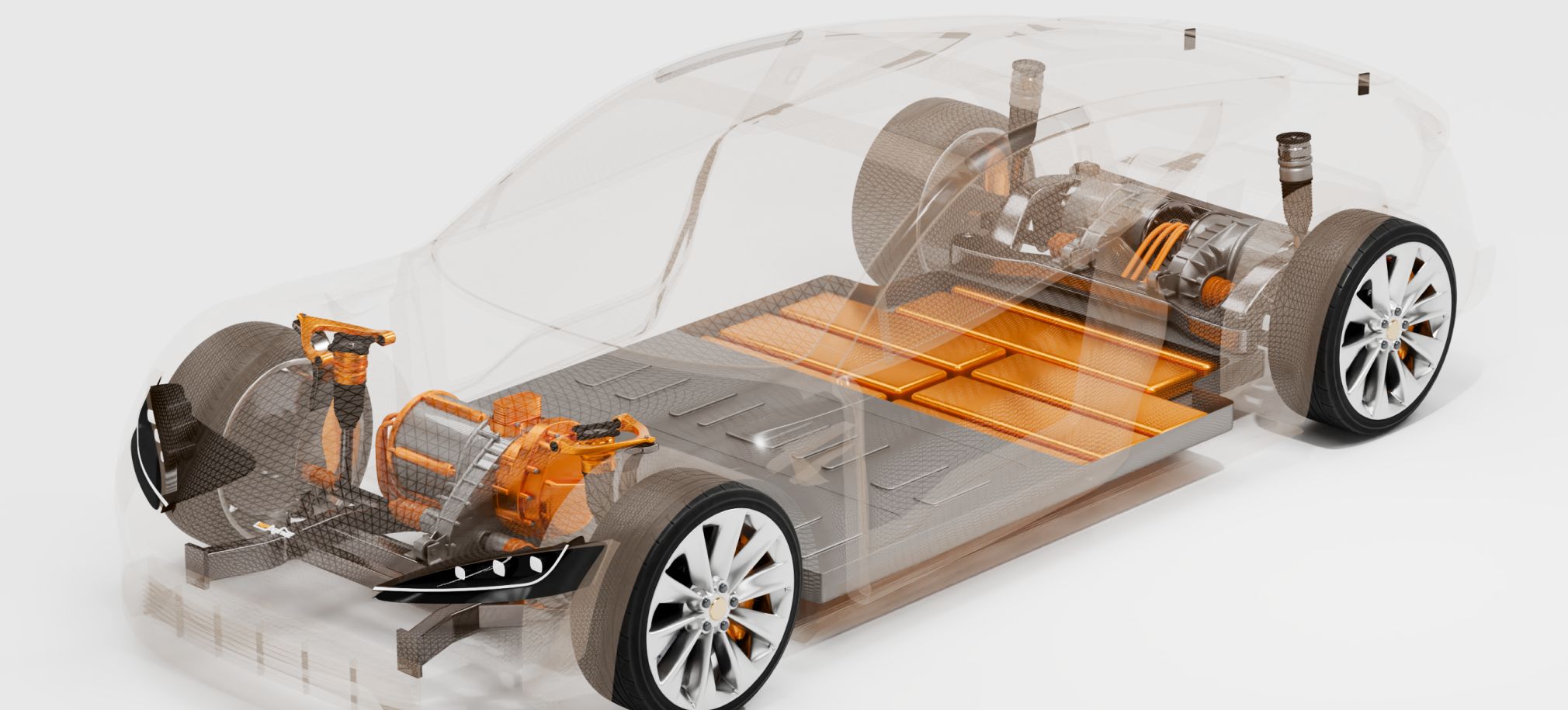
-
 Induction Motor
Induction Motor
-
 Automotive Electrical System Simulation
Automotive Electrical System Simulation
-
 DC/DC Bidirectional Converter
DC/DC Bidirectional Converter
-
 PWM Control for Brushless DC
PWM Control for Brushless DC
-
 BLDC Motor Control and Drive Simulation
BLDC Motor Control and Drive Simulation
-
 Electric Vehicle Fast Charger Simulation
Electric Vehicle Fast Charger Simulation
-
 DFIG Wind Turbine Simulation
DFIG Wind Turbine Simulation
-
 Dual Active Bridge
Dual Active Bridge
-
 EV Dynamometer Test Environment Simulation
EV Dynamometer Test Environment Simulation
-
 Electric Vehicle Simulation
Electric Vehicle Simulation
-
 Three-Phase Grid-Connected Inverter Using Direct-Q…
Three-Phase Grid-Connected Inverter Using Direct-Q…
-
 Three-Phase Grid-Connected Solar Photovoltaic
Three-Phase Grid-Connected Solar Photovoltaic
-
 Grid-Connected Rectifier
Grid-Connected Rectifier
-
 Grid-Tied Inverter System
Grid-Tied Inverter System
-
 Torque Control in a Hybrid Excitation Synchronous …
Torque Control in a Hybrid Excitation Synchronous …
-
 Wye-Delta Starting Circuit
Wye-Delta Starting Circuit
-
 IPMSM-Based Axle-Drive
IPMSM-Based Axle-Drive
-
 Simplified Parallel Hybrid Electric Vehicle
Simplified Parallel Hybrid Electric Vehicle
-
 Simplified Series Hybrid Electric Vehicle
Simplified Series Hybrid Electric Vehicle
-
 Series-Parallel Hybrid Electric Vehicle
Series-Parallel Hybrid Electric Vehicle
-
 Three-Phase Matrix Converter Simulation
Three-Phase Matrix Converter Simulation
-
 Venturini Modulation for Three-Phase Matrix Conver…
Venturini Modulation for Three-Phase Matrix Conver…
-
 Microgrid Frequency Regulation Using Vehicle-to-Gr…
Microgrid Frequency Regulation Using Vehicle-to-Gr…
-
 Three-Phase Modular Multilevel Converter
Three-Phase Modular Multilevel Converter
-
 Field-Oriented Control
Field-Oriented Control
-
 Interior Permanent Magnet Synchronous Generator
Interior Permanent Magnet Synchronous Generator
-
 Permanent Magnet Synchronous Machine
Permanent Magnet Synchronous Machine
-
 PMSM Rotor Angular Velocity
PMSM Rotor Angular Velocity
-
 PMSM-Based Electrical Traction Drive
PMSM-Based Electrical Traction Drive
-
 Maximum Power Point Tracking
Maximum Power Point Tracking
-
 Six-Phase Permanent Magnet Synchronous Machine
Six-Phase Permanent Magnet Synchronous Machine
-
 Synchronous Machine-Based Electrical Drive Simulat…
Synchronous Machine-Based Electrical Drive Simulat…
-
 Single-Stage Solar Inverter
Single-Stage Solar Inverter
-
 Three-Phase Cycloconverter Simulation
Three-Phase Cycloconverter Simulation
-
 Totem-Pole PFC Simulation
Totem-Pole PFC Simulation
-
 Twelve-Pulse Thyristor Rectifier
Twelve-Pulse Thyristor Rectifier
-
 Two-Wheeler On-Board Charger
Two-Wheeler On-Board Charger
-
 Vienna Rectifier Simulation
Vienna Rectifier Simulation
-
 High-Voltage Direct Current
High-Voltage Direct Current
-
 Wireless Power Transfer
Wireless Power Transfer
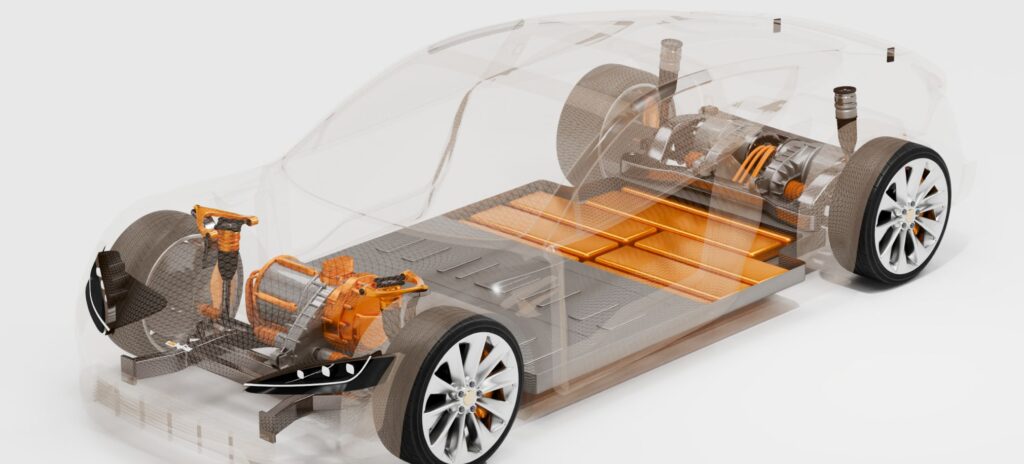
Comprehensive Documentation for IPMSM-Based Axle-Drive Simulation for Electric Vehicles
Table of Contents
- 1 Comprehensive Documentation for IPMSM-Based Axle-Drive Simulation for Electric Vehicles
- 1.1 Introduction
- 1.2 System Overview
- 1.2.1 What is an IPMSM-Based Axle-Drive?
- 1.2.2 Purpose of the Simulation
- 1.3 Key Features
- 1.3.1 High-Performance Torque and Speed Control
- 1.3.2 Regenerative Braking and Energy Recovery
- 1.3.3 Drivetrain Dynamics and System Interaction
- 1.3.4 Precise Control
- 1.3.5 Energy Recovery
- 1.3.6 Cost Savings
- 1.4 Simulation Objectives
- 1.5 Technical Description
- 1.5.1 System Configuration
- 1.5.2 Control Methodology
- 1.6 Advantages of IPMSM-Based Axle-Drives
- 1.7 Applications
- 1.7.1 Electric Passenger Cars
- 1.7.2 Commercial Electric Vehicles
- 1.7.3 Two-Wheeled Electric Vehicles
- 1.7.4 Off-Road and Utility Vehicles
- 1.7.5 Heavy-Duty Electric Vehicles
- 1.7.6 Marine and Aerospace Applications
- 1.7.7 Energy Management and Optimization
- 1.7.8 Regulatory Compliance and Certification
- 1.8 Simulation Benefits
- 1.9 Summary
- 1.10 Future Enhancements
- 1.10.1 Induction Motor
- 1.10.2 Automotive Electrical System Simulation
- 1.10.3 DC/DC Bidirectional Converter
- 1.10.4 PWM Control for Brushless DC
Introduction
Electric vehicles (EVs) rely on efficient powertrain systems to ensure optimal performance and energy efficiency. This project focuses on modeling and simulating an Interior Permanent Magnet Synchronous Machine (IPMSM) as part of an axle-drive system. The simulation incorporates key aspects of power delivery, torque control, and drivetrain dynamics, providing insights into EV propulsion and regenerative braking strategies. By integrating advanced control techniques and system modeling, this project enhances the understanding of powertrain behavior in EV applications.
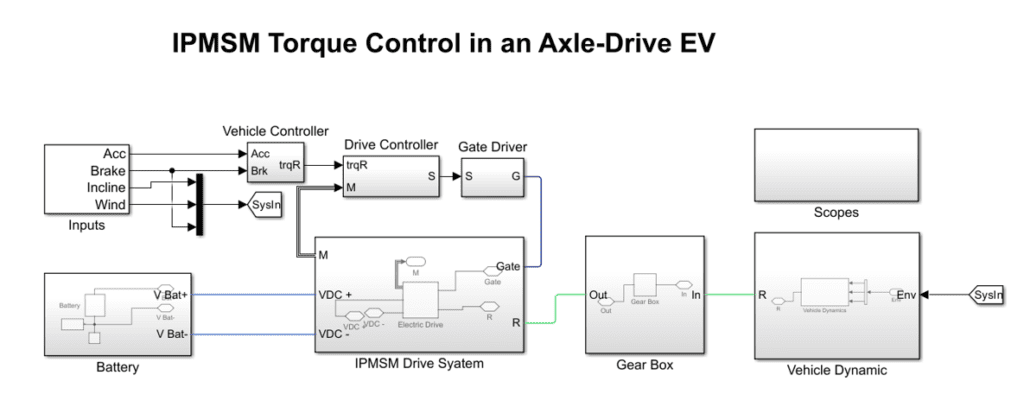
System Overview
What is an IPMSM-Based Axle-Drive?
An IPMSM-based axle-drive is a high-efficiency traction system used in EVs, where the motor is directly coupled to the drive axle, eliminating the need for a multi-speed transmission. The salient rotor structure of the IPMSM enhances torque generation and field-weakening capability, making it ideal for high-performance EV propulsion.
Purpose of the Simulation
The simulation aims to:
✔ Analyze torque and speed control under different load conditions.
✔ Evaluate regenerative braking strategies to improve energy efficiency.
✔ Optimize drivetrain dynamics for smoother operation and enhanced vehicle response.
Key Features
High-Performance Torque and Speed Control
Advanced control strategies, such as Field-Oriented Control (FOC) and Direct Torque Control (DTC), ensure:
✔ Precise torque and speed regulation across different driving conditions.
✔ Efficient power utilization through optimized flux control.
➡️ HIL/PHIL Benefit: Real-time validation of motor control strategies for improved EV drive performance.
Regenerative Braking and Energy Recovery
The simulation models regenerative braking to:
✔ Recover kinetic energy and enhance range efficiency.
✔ Implement smooth transitions between motoring and braking modes.
➡️ HIL/PHIL Benefit: Allows testing of braking energy recovery algorithms before real-world deployment.
Drivetrain Dynamics and System Interaction
The model includes:
✔ Axle-load distribution and wheel dynamics for realistic powertrain behavior.
✔ Impact of gear ratios and differential mechanisms on torque distribution.
➡️ HIL/PHIL Benefit: Provides a comprehensive environment to test system-level interactions in EV drivetrains.
Precise Control
Simulations enable precise control of torque and speed, improving vehicle performance and drivability.
Energy Recovery
Simulations optimize regenerative braking systems, improving overall energy efficiency.
Cost Savings
By identifying potential issues early in the design phase, simulations reduce the cost of prototyping and testing.
Simulation Objectives
This simulation helps evaluate:
✔ Power and energy efficiency of the IPMSM-based drive.
✔ Dynamic response to acceleration, braking, and road conditions.
✔ Effectiveness of different torque control strategies.
➡️ HIL/PHIL Benefit: Enables real-world testing of motor control and drivetrain efficiency.
Technical Description
System Configuration
- Input: DC power source (battery pack).
- Motor: IPMSM with dual-flux control capability.
- Inverter: Three-phase IGBT-based or SiC-based traction inverter.
- Transmission: Single-speed gearbox or direct axle-drive.
Control Methodology
- Motor Control Strategies: FOC, DTC, and Maximum Torque per Ampere (MTPA) control.
- Regenerative Braking Algorithm: Active energy recovery with optimized deceleration profiles.
- Traction System Modeling: Real-time wheel torque and slip control.
➡️ HIL/PHIL Benefit: Enables tuning of control parameters in real-time scenarios.
Advantages of IPMSM-Based Axle-Drives
✔ Higher Efficiency: Reduced power losses due to optimized flux control.
✔ Compact and Lightweight: Eliminates complex multi-speed transmissions.
✔ Enhanced Dynamic Response: Superior acceleration and deceleration characteristics.
➡️ HIL/PHIL Benefit: Provides a controlled test environment to fine-tune EV powertrain strategies.
Applications
Electric Passenger Cars
Propulsion System Design: Simulations are used to design and optimize IPMSM-based axle drives for electric passenger cars, ensuring efficient and smooth operation.
Energy Efficiency: Simulations help analyze and optimize energy consumption, improving the range and efficiency of electric vehicles.
Regenerative Braking: Simulations evaluate the effectiveness of regenerative braking
Commercial Electric Vehicles
Electric Buses: IPMSM-based axle drives are used in electric buses for efficient and reliable propulsion. Simulations optimize performance under varying load conditions.
Delivery Vans and Trucks: Simulations help design axle drives for electric delivery vans and trucks, ensuring efficient operation and energy management. systems in recovering energy and improving overall efficiency.
Two-Wheeled Electric Vehicles
Electric Scooters and Motorcycles: IPMSM-based axle drives are used in electric scooters and motorcycles for efficient and reliable propulsion. Simulations optimize performance and energy efficiency.
E-Bikes: Simulations help design and optimize axle drives for electric bicycles, ensuring smooth and efficient operation.
Off-Road and Utility Vehicles
Electric ATVs and UTVs: IPMSM-based axle drives are used in electric all-terrain vehicles (ATVs) and utility task vehicles (UTVs) for efficient and reliable propulsion. Simulations optimize performance under challenging terrain conditions.
Electric Tractors: Simulations help design axle drives for electric tractors, ensuring efficient operation and energy management in agricultural applications.
Heavy-Duty Electric Vehicles
Electric Trucks: IPMSM-based axle drives are used in electric trucks for efficient and reliable propulsion. Simulations optimize performance under varying load conditions.
Electric Construction Equipment: Simulations help design axle drives for electric construction equipment, such as excavators and loaders, ensuring efficient operation and energy management.
Marine and Aerospace Applications
Electric Boats: IPMSM-based axle drives are used in electric boats for efficient and reliable propulsion. Simulations optimize performance under varying water conditions.
Electric Aircraft: Simulations help design axle drives for electric aircraft, ensuring efficient operation and integration with propulsion systems.
Energy Management and Optimization
Battery Integration: Simulations help optimize the integration of IPMSM-based axle drives with battery systems, ensuring efficient energy management and range optimization.
Thermal Management: Simulations analyze the thermal performance of IPMSM-based axle drives, ensuring safe and efficient operation under high loads.
➡️ HIL/PHIL Benefit: Enables real-time simulation of various EV applications before physical deployment.
Regulatory Compliance and Certification
Emissions and Efficiency Testing: Simulations replicate regulatory driving cycles to ensure compliance with emissions and efficiency standards.
Safety Testing: Simulations evaluate the performance of IPMSM-based axle drives under crash and safety test conditions, ensuring compliance with safety regulations.
Homologation Testing: Simulations support the homologation process by providing data for regulatory certification.
Simulation Benefits
With this simulation, users can:
✔ Analyze motor dynamics and torque characteristics.
✔ Optimize regenerative braking for extended range.
✔ Evaluate drivetrain performance under real-world conditions.
➡️ HIL/PHIL Benefit: Ensures a seamless transition from simulation to real-world EV testing.
Summary
The IPMSM-Based Axle-Drive Simulation provides a detailed framework for studying torque control, drivetrain dynamics, and regenerative braking in EVs. Impedyme’s HIL and PHIL solutions enhance the development process:
| Development Stage | Impedyme’s Contribution |
|---|---|
| Powertrain Modeling | HIL-based rapid validation of torque control strategies |
| Energy Efficiency Testing | PHIL with real-time battery-inverter interaction |
| Regenerative Braking Optimization | Simulation-based testing for smooth braking transitions |
| Full-Vehicle Validation | PHIL-driven assessment under real driving cycles |
Future Enhancements
✔ Integration of AI-based predictive torque control algorithms.
✔ Advanced thermal modeling for motor and inverter cooling optimization.
✔ Development of real-time adaptive regenerative braking strategies.
The IPMSM-Based Axle-Drive Simulation serves as a vital tool for developing next-generation EV powertrains. With Impedyme’s HIL/PHIL solutions, engineers can optimize motor efficiency, enhance drivetrain performance, and validate control strategies before real-world deployment.
